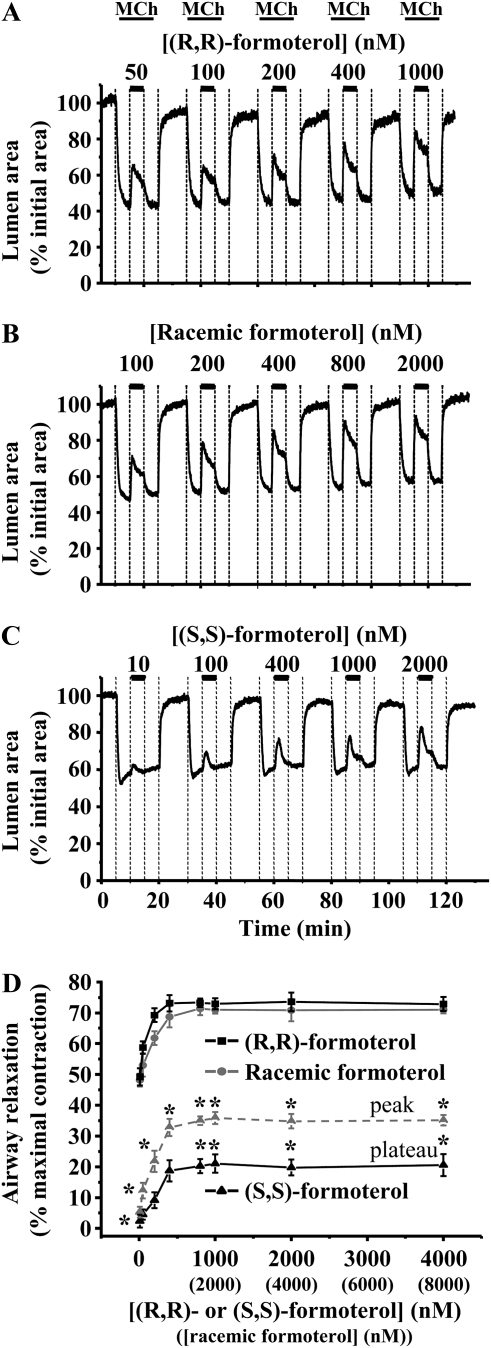Figure 1.
The relaxant effect of (R,R)-, racemic, and (S,S)-formoterol on contracted airways. Airways were contracted with 400 nM methacholine (MCh) and exposed to a series of formoterol concentrations: (A) (R,R)-formoterol (50–1,000 nM), (B) racemic formoterol (100–2,000 nM), and (C) (S,S)-formoterol (10–2,000 nM). (D) The mean concentration-dependent relaxation response of airways contracted by MCh (400 nM) to (R,R)-, racemic, and (S,S)-formoterol. The maximal relaxation induced by each formoterol isomer was quantified during the plateau phase (solid lines). The transient response induced by (S,S)-formoterol was also quantified at peak relaxation (dashed line). The relaxant effect of (R,R)-formoterol and racemic formoterol (containing an equal concentration of (R,R)-formoterol) was not significantly different. However, both (R,R)- and racemic formoterol induced a significantly larger relaxation than (S,S)-formoterol. Mean (±SD) values are presented; a minimum of four experiments was performed for each concentration for each mouse (*P < 0.05; n = 7 mice for (R,R)-formoterol, n = 6 for racemic formoterol and (S,S)-formoterol).

